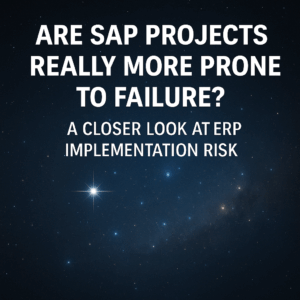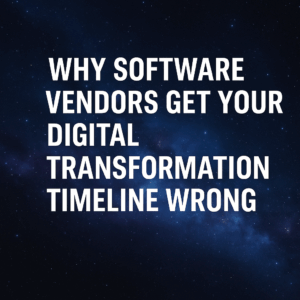In today’s ever-evolving enterprise technology landscape, the inexorable march towards cloud ERP software has emerged as a defining trend. Businesses, driven by imperatives of agility, scalability, and innovation, are increasingly embracing cloud-based solutions as the cornerstone of their digital transformation strategies. Yet, amidst the fervor surrounding the cloud’s promise, a shadowy underbelly lurks—a realm fraught with complexities, uncertainties, and potential pitfalls. In this comprehensive exploration, we delve deep into the multifaceted world of cloud ERP software, unraveling its risks and rewards, and charting a course towards informed decision-making and sustainable digital excellence.
Table of Contents
ToggleThe Promise of Cloud ERP software
At the heart of the cloud ERP’s allure lies a tantalizing promise—a promise of liberation from the shackles of on-premise infrastructure, of agility unfettered by hardware constraints, and of innovation accelerated by ubiquitous accessibility. Cloud ERP heralds a paradigm shift, empowering organizations to transcend traditional boundaries, reimagine business processes, and unlock transformative potential. With the promise of reduced upfront costs, simplified maintenance, and seamless scalability, cloud ERP beckons as a beacon of technological
The Dark Side
Yet, beneath the veneer of promise lies a labyrinthine landscape fraught with risks and uncertainties. As organizations embark on their cloud ERP journey, they confront a myriad of challenges—challenges that demand careful consideration and strategic foresight. Chief among these challenges is the specter of vendor lock-in—a phenomenon wherein organizations find themselves ensnared in a web of dependency, tethered to a single cloud ERP provider by the tendrils of interoperability constraints and switching costs. The allure of seamless integration and unified ecosystems may obscure the perils of limited flexibility and escalating costs—a reality that organizations must confront with vigilance and discernment.
The Economics of Cloud ERP Adoption
While the allure of reduced upfront costs and predictable subscription models may entice organizations into the cloud fold, the long-term financial implications merit careful scrutiny. Despite initial savings, the total cost of ownership over the lifespan of cloud systems often exceeds that of traditional on-premise solutions. As subscription costs escalate over time, organizations may find themselves grappling with budgetary constraints, diminishing returns on investment, and the specter of unforeseen expenses. Navigating the intricacies of cloud ERP economics demands meticulous planning, diligent evaluation, and a nuanced understanding of long-term cost implications.
Navigating the Evolutionary Landscape
Amidst the cacophony of cloud vendors vying for market dominance, organizations must navigate a landscape marked by varying degrees of maturity and evolutionary progress. While born-in-the-cloud solutions tout seamless integration and cutting-edge features, legacy vendors grapple with the complexities of migrating decades-old functionalities to cloud-native architectures. As organizations traverse this evolutionary landscape, they confront the dual challenge of compromised functionality and fragmented ecosystems—a reality that underscores the importance of strategic planning, vendor due diligence, and meticulous risk management.
Charting a Course Forward: Towards Informed Decision-Making
In confronting the complexities of cloud ERP, organizations must adopt a balanced and strategic approach—one informed by foresight, diligence, and informed decision-making. Embracing a diversified approach to cloud ERP adoption, hedging against vendor lock-in, and meticulously evaluating long-term cost implications are essential steps in navigating the murky waters of digital transformation. By fostering a culture of vigilance, adaptability, and strategic acumen, organizations can mitigate the risks of cloud ERP technology and chart a course towards sustainable digital excellence.
Conclusion:
As enterprises traverse the tumultuous terrain of digital transformation, the allure of cloud ERP computing beckons with promises of innovation, efficiency, and agility. Yet, beneath the veneer of promise lies a darker reality—one fraught with risks, uncertainties, and potential pitfalls. By confronting the challenges of vendor lock-in, escalating costs, and evolving capabilities head-on, organizations can navigate the complexities of cloud ERP technology with resilience and foresight. In embracing a balanced approach to cloud ERP adoption, informed by strategic discernment and diligent planning, enterprises can unlock the transformative potential of cloud ERP computing while mitigating its inherent risks. As the journey unfolds, let us navigate the complexities of cloud ERP computing with courage, conviction, and clarity, forging a path towards a future defined by digital empowerment and sustainable success.

How can we help?
At Third Stage Consulting, we’re committed to helping organizations navigate the complexities of digital transformation, including data management. Whether you’re embarking on a new transformation journey or seeking to optimize existing processes, our team is here to support you every step of the way.





